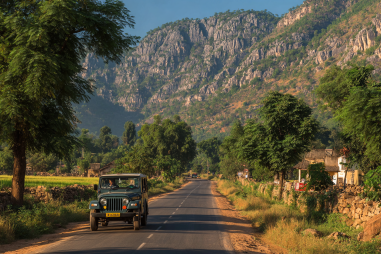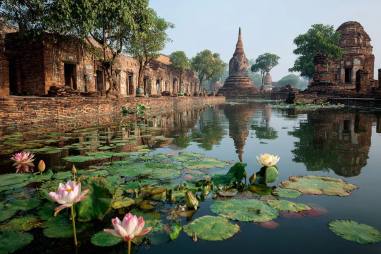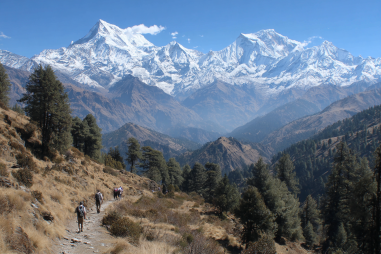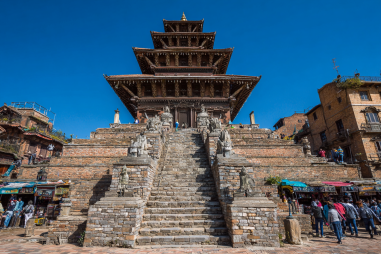Lumbini, the birthplace of Lord Buddha, is not only a sacred pilgrimage site but also a vibrant hub of Buddhist culture and architecture. Among its most fascinating features is the monastic zone, a dedicated area where monasteries from various countries stand side by side, each representing distinct traditions and artistic expressions of Buddhism. These monasteries offer a unique window into the spiritual and cultural diversity of Buddhism as practiced around the world. If you are planning a Lumbini monasteries tour, prepare to embark on a captivating journey that combines history, faith, art, and serene natural beauty.
Exploring the Monastic Zone in Lumbini
The monastic zone in Lumbini is a carefully preserved and developed area surrounding the sacred garden where Queen Mayadevi gave birth to Siddhartha Gautama, who would become the Buddha. In recognition of Lumbini’s spiritual significance, numerous countries have built monasteries here, each reflecting their national Buddhist traditions. The site is maintained by the Lumbini Development Trust, ensuring that it remains a peaceful and inspiring environment for visitors and monks alike.
Walking through the monastic zone is like traveling through the vast realms of Buddhist culture across Asia and beyond. The zone covers several hectares, showcasing an assembly of architecturally distinct monasteries, prayer halls, meditation spaces, and gardens. This international collaboration highlights Buddhism’s global reach and the respect it commands across different societies.
Overview of International Monasteries by Country
One of the most impressive aspects of a Lumbini monasteries tour is the incredible international representation. Various countries have erected monasteries here, each distinct and steeped in their own cultural and ritualistic ethos. Some of the most notable monasteries include:
- Thailand: The Thai Monastery features intricate woodwork, bright gold decorations, and a unique symbolism that reflects Theravada Buddhism, accentuated by graceful Buddha statues and traditional motifs.
- Japan: Japan’s monastery stands out with its minimalist Zen architecture, emphasizing simplicity, natural materials, and tranquil gardens designed for meditation.
- China: The Chinese Monastery embodies classic Chinese Buddhist architecture with sweeping tiled roofs, red pillars, and ornamental dragons reflecting Mahayana Buddhist traditions.
- Myanmar: Myanmar’s monastery is distinguished by its golden pagoda-style roofs and rich mural paintings, evocative of the Theravada tradition prevalent in the region.
- Sri Lanka: The Sri Lankan monastery honors the ancient Sinhalese architectural principles, with stone carvings and serene meditation halls embodying Pali Buddhism.
- Tibet: The Tibetan Buddhist monastery captures the spiritual mysticism of Vajrayana Buddhism, featuring colorful prayer flags, intricate murals, and stupas.
- Korea: Korea’s monastery incorporates elegant wooden structures with curved eaves and harmoniously arranged spaces for chanting and meditation.
Each monastery is more than just a building; it is a living representation of Buddhist philosophy, identity, and artistry.
Architectural Styles and Symbolism
The variation in architectural styles across Lumbini’s monasteries is a fascinating study in religious symbolism and cultural identity. From the ornately gilded structures of Southeast Asia to the austere and contemplative Zen influences of East Asia, each monastery tells a story through its design elements.
For example, the use of colors is deeply symbolic: gold signifies enlightenment and purity, red represents life force and protection, while white conveys peace and spiritual awakening. Roof styles—from the multi-tiered pagodas of China and Myanmar to the simple, slatted wooden roofs of Japan—reflect climatic considerations as well as religious symbolism.
Moreover, the interiors are often adorned with statues of the Buddha in various mudras (hand gestures), each signifying different teachings and aspects of the Buddha’s life. Wall paintings depict stories from Buddhist texts, while stupas and prayer wheels are common fixtures symbolizing the cyclical nature of life and spiritual progress.
Understanding these architectural and artistic details enhances the visitor’s appreciation, turning a simple walk through the monastic zone into an immersive cultural experience.
How to Plan a Monasteries Walking Tour
To make the most of your Lumbini monasteries tour, a well-planned itinerary is essential. Here are some tips for organizing your walking tour:
- Start Early: Begin your visit early in the morning to enjoy the peaceful atmosphere and avoid the midday heat.
- Map Your Route: Obtain a map from the Lumbini Development Trust or your guide to identify monasteries of interest and plan a logical walking route.
- Wear Comfortable Shoes: The monastic zone covers considerable ground, so comfortable footwear is a must.
- Bring Essentials: Carry water, sun protection, and a notebook or camera for capturing your impressions, but always with respect to photography restrictions.
- Engage a Guide: Consider hiring a knowledgeable guide who can provide historical context, explain symbolism, and share insights about each monastery’s uniqueness.
- Allocate Enough Time: Spend ample time in each monastery to soak in the spirituality and artistry rather than rushing through.
Walking from one monastery to the next in a calm, unhurried manner allows you to meditate upon the profound messages and cultural diversity encapsulated in this site.
Interacting Respectfully with Monks and Visitors
Lumbini’s monasteries are not only tourist attractions but active places of worship and study. Visitors should be mindful of the customs and etiquette observed within these sacred spaces, especially when interacting with monks and other visitors:
- Dress Modestly: Wear clothing that covers shoulders and knees as a sign of respect.
- Remove Footwear: Shoes must be removed before entering monastery buildings or prayer halls.
- Maintain Silence: Speak softly or remain silent to preserve the tranquil atmosphere.
- Seek Permission for Photography: Always ask permission before taking photographs, particularly of monks or sacred objects.
- Avoid Physical Contact with Monks: In many Buddhist traditions, physical contact with monks by women is discouraged.
- Respect Rituals: Observe ongoing rituals silently and do not interrupt ceremonies.
Being aware and respectful will enrich your experience and demonstrate appreciation for the local culture and beliefs.
Best Times for Monastery Visits
The best time to explore Lumbini’s monasteries is during the cooler, drier months, typically from October to March. During this period, the weather is pleasant with mild daytime temperatures and minimal rainfall, making walking tours comfortable and enjoyable. Early mornings and late afternoons are particularly special times, as the temples glow in the soft sunlight and monks engage in their morning or evening rituals.
Visiting during major Buddhist festivals, such as Vesak (Buddha Purnima), which usually occurs in April or May, can offer a unique glimpse into vibrant celebrations and large gatherings of devotees. However, these festivals also bring bigger crowds, so plan accordingly if you prefer a quieter visit.
In contrast, the monsoon season (June to September) sees heavy rainfall, which might restrict outdoor exploration, although the lush green surroundings add a distinct beauty to the scenery.
Celebrating Global Buddhist Heritage Through Lumbini
A Lumbini monasteries tour is much more than just sightseeing. It is an intimate encounter with the world’s diverse expressions of Buddhism—a religion that has united millions across centuries through shared philosophies of peace, compassion, and mindfulness. Each monastery is a testament to cultural dialogue and religious devotion, bringing together artists, monks, and pilgrims from across continents.
Walking the paths of Lumbini’s monastic zone, visitors experience a profound sense of unity weaving through differences in style, language, and ritual. The tour invites reflection on how a single spiritual legacy can inspire myriad interpretations and lifestyles, fostering tolerance and mutual respect among global communities.
Whether you are a devout Buddhist, a history enthusiast, or a cultural traveler, the monasteries of Lumbini offer an enriching and uplifting journey, inviting all who visit to pause, ponder, and celebrate the enduring legacy of the Buddha’s teachings.







